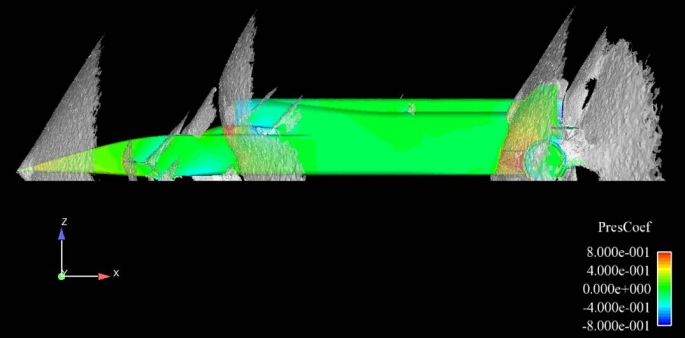
This diary is my own look at the BLOODHOUND Programme as we try to build the world’s first 1000 mph Car – and, even more ambitiously, as we try to inspire a national interest in science in engineering. It’s a huge task, but worth the effort. If we want to live in a high technology low-carbon world in the near future, then someone is going to have to build it for us, and that someone needs to be inspired now.
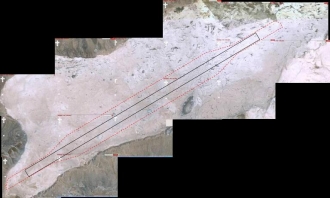 Optimum track layout for Verneuk Pan, South Africa
Optimum track layout for Verneuk Pan, South Africa
Every month we get together for a team meeting to discuss how all areas of the Project are progressing – funding, engineering, PR, education, and so on. One of my contributions to these meetings has been updates on the search for a desert on which to run BLOODHOUND. Following recent tests, we’ve found out that surface preparation can adequately be done in South Africa, but not so easily in the US. I’ve also started to look at details like where we would put the tracks, where the team would live, and so on – the interest in the team is electric, they really want to get the Car built and get out there. Every day’s progress brings this a day closer – it’s hard not to be a bit excited.
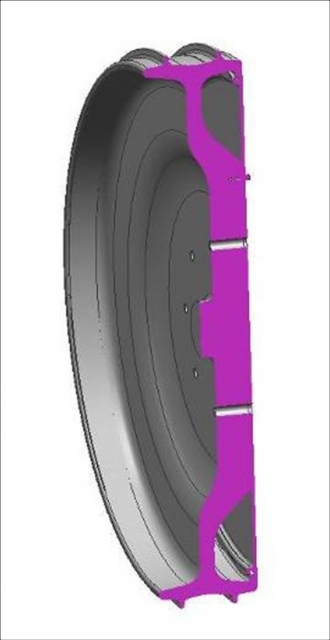 The 'asymmetric' wheel - we're researching the benefits of making the wheel symmetrical
The 'asymmetric' wheel - we're researching the benefits of making the wheel symmetrical
The engineering is coming on well in most areas, with incredible support from our product sponsors (over 140 to date). We’re currently re-visiting the wheel design with our new wheel sponsor (to be announced shortly!), looking at a symmetric design. While we have to be a bit more clever about the steering and brake packaging (the steering, for instance, will require what’s called a ’virtual steering axis’, as the centre of the wheel is in the way of the real one), the proposed symmetrical wheel may prove to be stronger, lighter and cheaper – which are all Good Things when you’re going to experience 50 000 ‘G’ at the wheel rim. This month we’ve also agreed a range of downloads for the wheels (to summarise, never less than static weight on each wheel, and never more than a 2:1 ratio of weight distribution between the front and rear wheels) – this has been the result of 18 months of modelling and research, so it’s an important step for us. These loadings affect stability, so now I’ve got some idea of how the Car might handle and can start to think about the driving in more detail.
Our main problem area is still the aerodynamics to deliver these downloads. Ben Evans and the guys are producing impressive amounts of data, including looking at some fascinating variations (we’re onto the 8th major iteration, with numerous sub-variants looking at minor differences, to make sure that we pick the optimum combination of wheel, suspension, fin and bodywork layout). We’ve even taken a jump sideways, to look at reversing the positions of the jet and rocket (Config 8) – after getting over the surprise of how it looks, it has some clear advantages. Question is, will the rocket tear up the surface if it’s that close to the ground? We’re still researching that one – I don’t want to drive into a trench on the return run!
 [picture at the top of the page : each config is run through CFD modelling]
[picture at the top of the page : each config is run through CFD modelling]
Talking of driving the Car, I was lucky enough to do some racing in the Elise Trophy Cup recently. It’s not that I harbour any long-term ambitions to be a race driver (it’s not fast enough for me!) but it got us some publicity, a little extra sponsorship (with many thanks to Paul Golding and Lotus on Track for arranging it) and some car-handling practice for me. Being a Fighter Pilot is fantastic preparation for the Land Speed Record, but being a race-driving Fighter Pilot is even better.
Money is tight, as always. Still, if you’re going to launch a high-tech engineering project in the same week as the recession kicks in, then it’s to be expected. We’re still moving forward, despite the recession – and we’ve got some great new options for funding coming up, so watch this space.
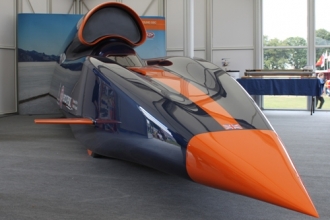 The public response to BLOODHOUND continues to be astonishing. We’ve just taken the show Car to Goodwood Festival of Speed for its public unveiling. It was great to watch people come into the pavilion and just stop dead in disbelief at the sight of it. As a result, over 230 new members signed up to our Supporters Club there and then, unable to resist the chance to come and see the real thing as we build it and test it in the UK. One question we heard a lot is ‘where will you build it?’ We’re about to find out – with the 4 cities bidding to host us, and the bid proposals now coming in, we’ll soon know. A new home for the Project and the start of the build programme – exciting times.
The public response to BLOODHOUND continues to be astonishing. We’ve just taken the show Car to Goodwood Festival of Speed for its public unveiling. It was great to watch people come into the pavilion and just stop dead in disbelief at the sight of it. As a result, over 230 new members signed up to our Supporters Club there and then, unable to resist the chance to come and see the real thing as we build it and test it in the UK. One question we heard a lot is ‘where will you build it?’ We’re about to find out – with the 4 cities bidding to host us, and the bid proposals now coming in, we’ll soon know. A new home for the Project and the start of the build programme – exciting times.
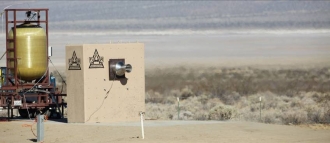 To make a great weekend better, the first firing of our full-size rocket (monopropellant only for the first firing) was achieved the following day [picture right]. As soon as they start firing the hybrid rocket, I’m going out to the Mojave Desert to watch!
To make a great weekend better, the first firing of our full-size rocket (monopropellant only for the first firing) was achieved the following day [picture right]. As soon as they start firing the hybrid rocket, I’m going out to the Mojave Desert to watch!
Yesterday I was at Bridgnorth Endowed School (I work with the Headmaster’s sister, who is a Group Captain, which made it easier to get some time off work) for their annual prize-giving and to tell the kids about BLOODHOUND. Anyone who doubts that we’re inspiring kids should have come with me to Bridgnorth – 100 kids sat spell-bound for over an hour while I told them what we’re doing, including all the of the science behind it. Structural design, aerodynamics, computational fluid dynamics, wheel design, cockpit instrumentation, data analysis – they just loved it all, including the video of Thrust SSC dropping a sonic boom in 1997. In 2 years’ time it will be BLOODHOUND SSC making the booms – and kids all over the world will be watching. Inspiring the next generation? I think we’re well on the way.


